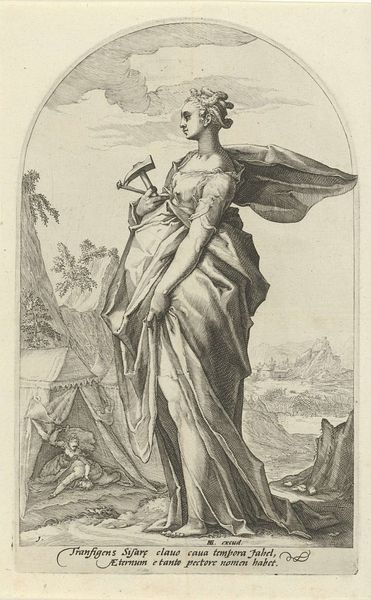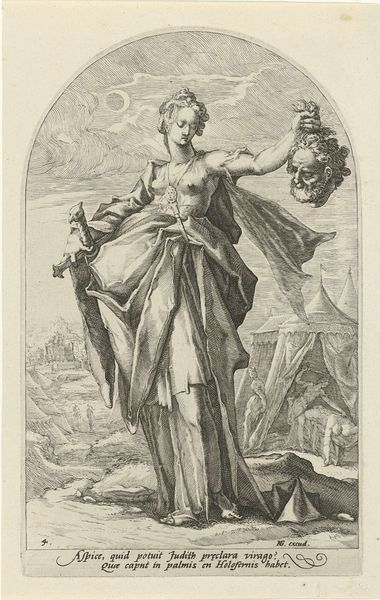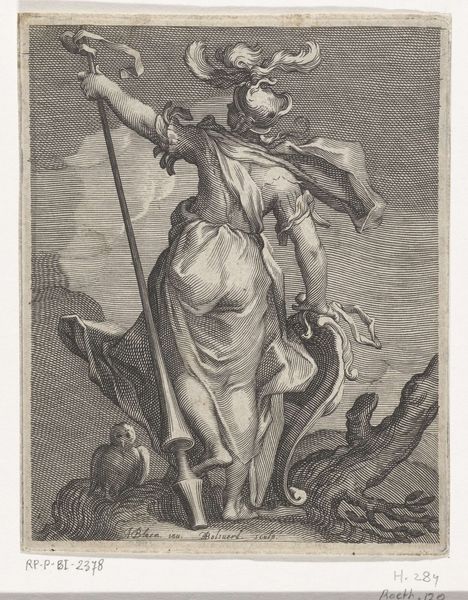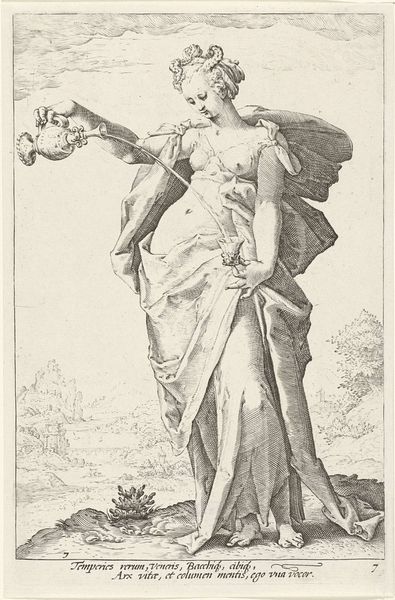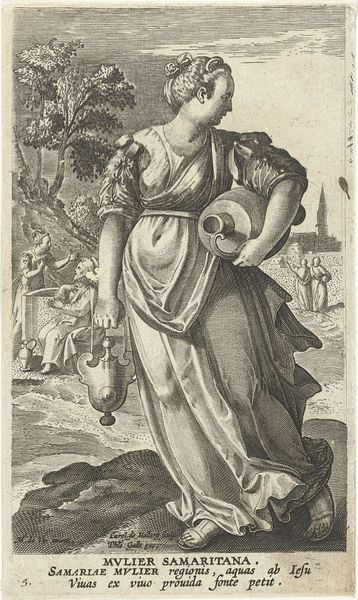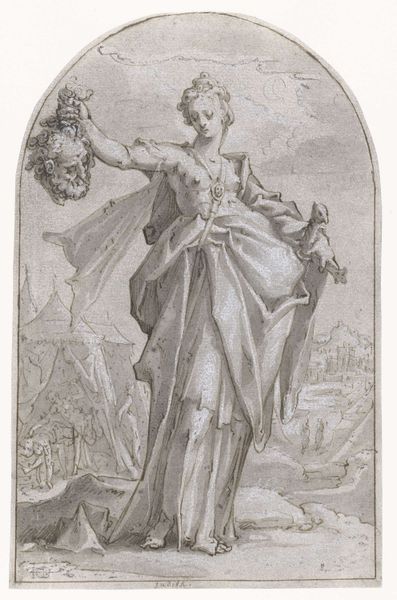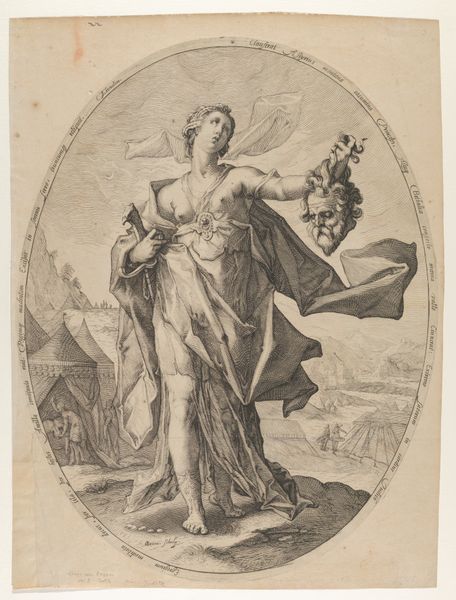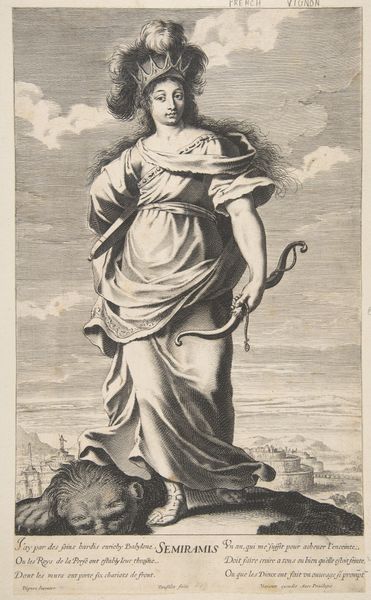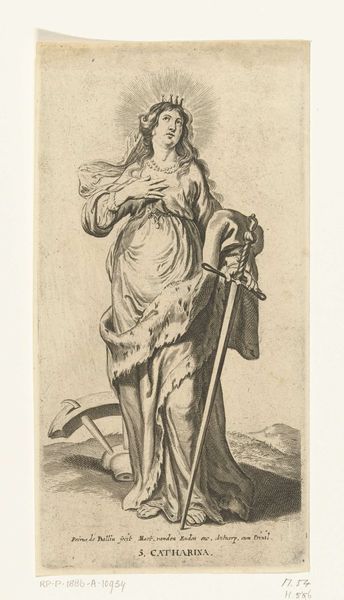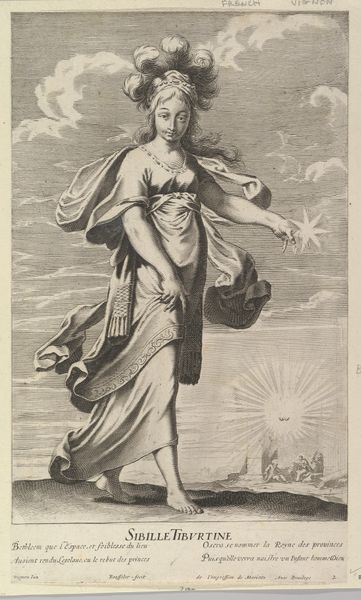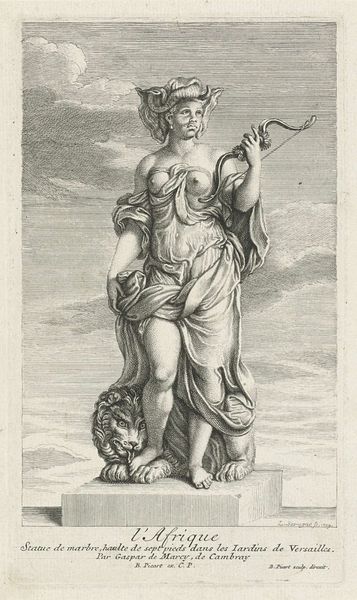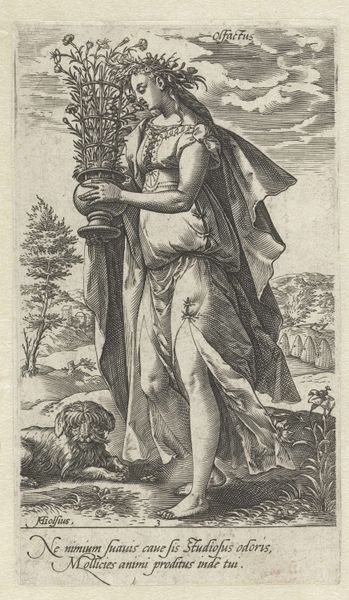
Dimensions: height 295 mm, width 204 mm, height 310 mm, width 220 mm
Copyright: Rijks Museum: Open Domain
This is Judit met het hoofd van Holofernes, an engraving made by Wierix, in the late 16th or early 17th century. During this period, images of strong women gained popularity as symbols of virtue, resistance, and even national identity. Here, we see Judith, a biblical heroine who saved her people by seducing and then beheading the Assyrian general Holofernes. Wierix presents Judith as a powerful figure; she stands triumphantly, sword in hand, the general’s head in the other. But what does it mean to celebrate violence, even in the name of liberation? The image complicates simple notions of female virtue, presenting Judith as both a savior and an executioner. The engraving invites us to consider the complex relationship between gender, power, and violence in times of conflict. How does it challenge or reinforce existing ideas about female agency? Does Judith's act empower or further confine her within societal expectations?
Comments
No comments
Be the first to comment and join the conversation on the ultimate creative platform.
